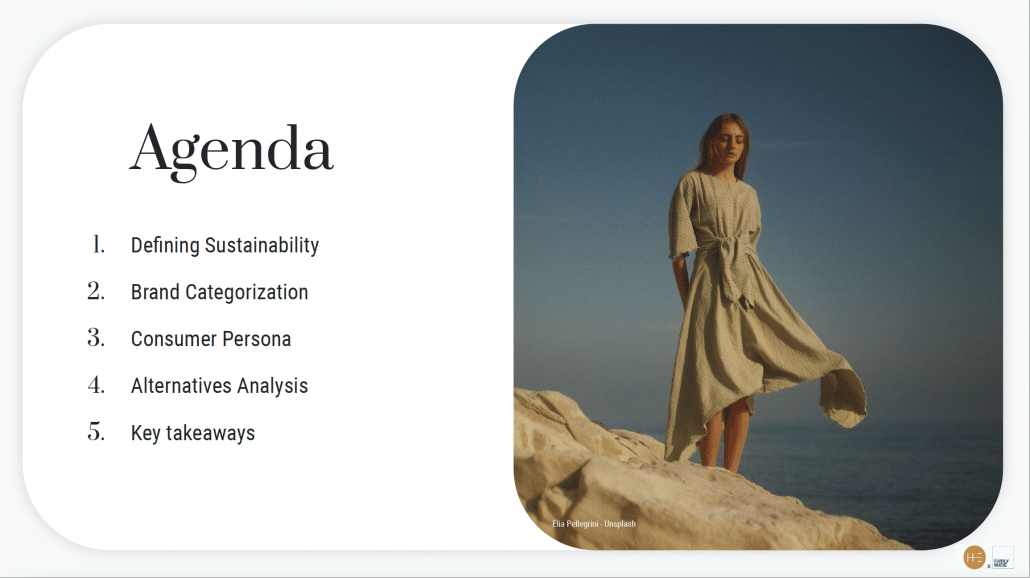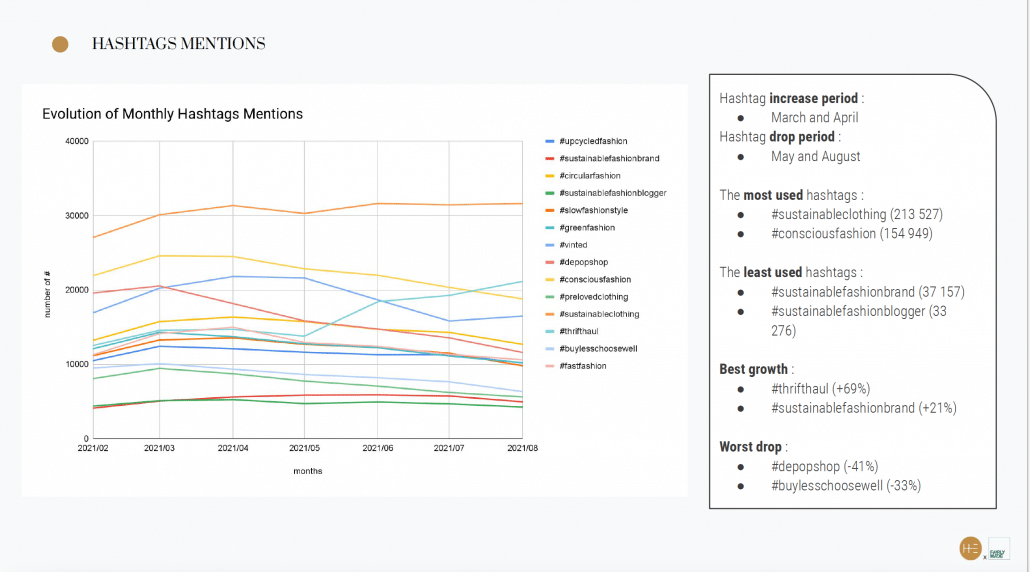How can you materialize your
commitments towards sustainability?
Heuritech x Luxurynsight - Report
In partnership with Fairly Made, Heuritech offers a comprehensive guide to help fashion brands actualize their sustainability goals. By leveraging AI-driven image recognition, trend analysis, and supply chain insights, this report breaks down the essential steps for making sustainability a reality in fashion. Discover how brands can better align their business models with sustainable practices.
The report outlines actionable strategies for fashion brands to integrate sustainability across their supply chains. From sourcing materials to analyzing production impact, Heuritech’s AI-powered insights combined with Fairly Made’s expertise provide the tools for brands to manage environmental, social, and ethical challenges effectively.
Key takeaways from the Fairly Made x Heuritech report:
1. Defining sustainability in fashion: A holistic approach
Sustainability in fashion is built on four critical pillars: environment, society, transparency, and ethics. For brands, this means not only using sustainable materials like organic cotton but also understanding the entire life cycle of their products—from raw material sourcing to manufacturing, transportation, and end-of-life solutions like recycling. This framework ensures that every step is analyzed for its environmental and social impact.
Heuritech’s analysis shows that producing an organic cotton jacket in Europe results in 36% energy savings and a 92% reduction in CO2 emissions compared to conventional production in Asia. These numbers offer a clear business case for investing in sustainable materials and local manufacturing.
2. Brand categorization: tailoring sustainability by brand type
Fashion brands are categorized into four types: Small Slow Fashion, Sustainable Giants, Established Brands, and Young Designers. Each category faces unique challenges and opportunities regarding sustainability. For example, Small Slow Fashion brands need to focus on innovation and variety to grow their audience, while Sustainable Giants like Patagonia must balance large-scale production with transparency and waste reduction.
While smaller brands can remain more agile and focus on niche markets, larger brands must invest in R&D and transparency to maintain credibility. This helps them address issues like the continued use of synthetic fibers or the limitations of emission-offsetting strategies.
3. Understanding consumer personas for sustainable fashion
Heuritech defines three key consumer personas: Slow Fashion Activists, Vintage Aficionados, and Hybrid Adopters. Each persona has different motivations and habits when it comes to sustainability. For instance, Slow Fashion Activists prioritize long-lasting, high-quality products, while Hybrid Adopters are open to sustainable alternatives but may still purchase fast fashion if sustainable options aren’t available.
Analysis of consumer behavior on social media reveals that hashtags like #sustainablefashionbrand saw a 21% growth in mentions, showing a growing interest in sustainability across consumer groups, especially among Millennials and Gen Z.
4. Supply chain transparency and impact analysis
Understanding the supply chain is essential for sustainability. Fairly Made’s 360° tool helps brands gain detailed insights into their supply chains, enabling them to track compliance, recyclability, and overall environmental impact. The report emphasizes the importance of choosing partners who prioritize sustainable practices and ensuring transparency at every stage.
A life cycle assessment (LCA) of a denim jacket produced with organic cotton in Europe showed a 50% reduction in freshwater eutrophication compared to conventional cotton production in Asia. These numbers highlight the tangible benefits of ethical sourcing.
5. Aligning collections with sustainability goals through trend forecasting
Heuritech’s trend analysis platform allows brands to align their collections with sustainable materials and trends that resonate with eco-conscious consumers. By analyzing social media data, brands can predict which trends will dominate, ensuring that their collections not only meet market demand but also reflect their sustainability commitments.
Trends like wide-leg formal pants and spaghetti strap dresses are forecasted to experience significant growth, particularly among edgy and trendy consumers who are also more likely to prioritize sustainability in their purchases. Brands can use this data to develop collections that appeal to these segments while reducing overstock and waste.
Sustainability in fashion requires a multi-faceted approach that considers everything from material sourcing to consumer behavior. By working with Heuritech and Fairly Made, fashion brands can leverage data-driven insights to create meaningful, long-lasting changes in their production processes. Whether you are a small slow fashion brand or a large sustainable giant, this report offers valuable insights and tools to help you on your sustainability journey.
Other useful resources:
- How technology is making fashion more sustainable
- How artificial intelligence can help fashion brands be more sustainable
- Sustainability: The catalyst for transparency in fashion
- How trend forecasting can help C&A realize a more sustainable future
What brands think about our report

"Thank you for the follow up and sending it to me! This was really interesting and insightful"
- Jessica Rhoads, Anthropologie

"I appreciated the diversity of themes, but how each theme had cohesion ("Blooming Nature" and "Sleek Futurism" were two I hadn't seen yet)"
- Charles Wilson, New Balance

